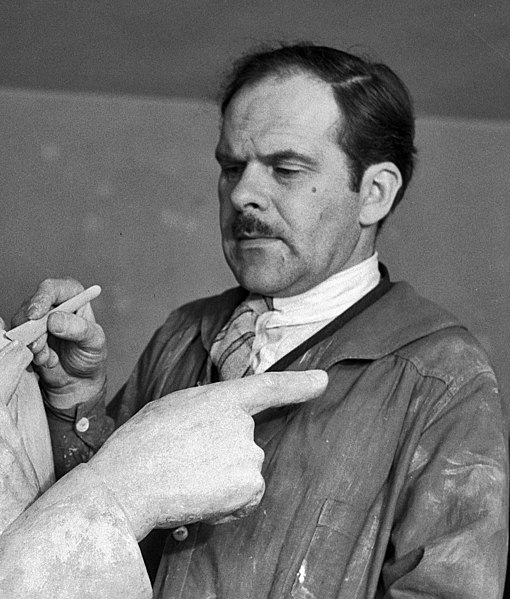Cubist sculpture developed in parallel with Cubist painting, beginning in Paris around 1909 with its proto-Cubist phase, and evolving through the early 1920s. Just as Cubist painting, Cubist sculpture is rooted in Paul Cézanne's reduction of painted objects into component planes and geometric solids; cubes, spheres, cylinders, and cones. Presenting fragments and facets of objects that could be visually interpreted in different ways had the effect of 'revealing the structure' of the object. Cubist sculpture essentially is the dynamic rendering of three-dimensional objects in the language of non-Euclidean geometry by shifting viewpoints of volume or mass in terms of spherical, flat and hyperbolic surfaces.
Alexander Archipenko, 1912, La Vie Familiale (Family Life). Exhibited at the 1912 Salon d'Automne, Paris and the 1913 Armory Show in New York, Chicago and Boston. The original sculpture (approx six feet tall) was accidentally destroyed.
Joseph Csaky, 1911-1912, Groupe de femmes (Groupe de trois femmes, Groupe de trois personnages), plaster lost, Exhibited at the 1912 Salon d'Automne and Salon des Indépendants, 1913, Paris
Pablo Picasso, 1909–10, Head of a Woman (Fernande), modeled on Fernande Olivier
Albert Gleizes, 1912, Paysage près de paris, (Paysage de Courbevoie, Landschaft bei Paris), oil on canvas, 72.8 x 87.1 cm, missing from Hannover Germany since 1937
Alexander Porfyrovych Archipenko was a Russian-American avant-garde artist of Ukrainian descent, sculptor, and graphic artist, active in France and the United States. He was one of the first to apply the principles of Cubism to architecture, analyzing human figure into geometrical forms.
Archipenko in 1935
La Vie Familiale (Family Life), 1912, height approx. 6 feet (1.8 m). Exhibited at the 1912 Salon d'Automne, Paris and the 1913 Armory Show in New York City, Chicago and Boston. Photograph from Comœdia Illustré (1912) of the original sculpture, later accidentally destroyed
Untitled, 1912, published in Action, Cahiers individualistes de philosophie et d'art, October 1920
Recherche de plastique, 1913. Exhibited at Erster Deutscher Herbstsalon, Berlin, 1913, an exhibition organized by Herwarth Walden (Galerie Der Sturm), including Metzinger, Delaunay, Gleizes, Léger, Marcoussis and Picabia








